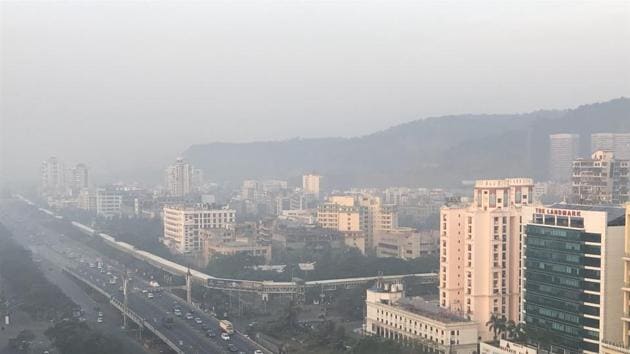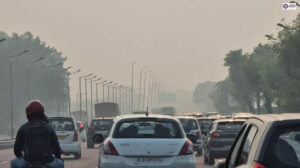Kharghar-Panvel belt near Mumbai breathes unsafe air for 17 hours a day: Study
Air pollution levels on the outskirts of the Mumbai Metropolitan Region (MMR) are above safe limits for nearly two-thirds of the day, with peak pollution during early morning hours posing a threat to morning walkers and joggers, according to a month-long air study carried out by environment group Waatavaran Foundation across the Kharghar-Panvel-Taloja belt.
The air has suspended particulate matter (PM) of different sizes. Many of these are a complex mixture of dust, pollen, soot and smoke and are hazardous, making them responsible for lower visibility and smog. Of this, PM2.5 is the smaller kind, with a diameter not more than 2.5 micrometers. They are fine particles that can stay in the air for days or weeks and are small enough to invade the narrowest of lung airways and cause health ailments. The study found extremely high levels of PM2.5 in the air, especially between 6am and 8am, and average air quality above safe standards for 17 hours every day. Air quality only improved during afternoon hours.
“The idea was to understand what local residents in these areas were breathing daily while highlighting the failure of the Maharashtra Pollution Control Board (MPCB) and the civic bodies to provide a dedicated air quality monitoring system in these areas,” said Bhagwan Kesbhat, founder, Waatavaran Foundation.
The data from five locations – Maharashtra Industrial Development Corporation (MIDC), Taloja; Sector 13, Panvel; Navade, Taloja; Sector 7 and 36, Kharghar, showed average PM2.5 levels over 31 days was 101.12 microgrammes per cubic metre (μg/m3), which is almost twice the national safe standard (60μg/m3), and four times the World Health Organization (WHO) standard (25μg/m3). The highest PM2.5 concentration was at 7am at 141.1μg/m3 (average data from five monitors). MIDC Taloja had the most polluted air among five locations at 197.4 μg/m3 at 7am. “The average PM2.5 level at MIDC for 31 days was 139.27μg/m3, which is 2.3 times the national standard and 5.5 times the WHO standard,” said Farah Thakur from Waatavaran, who analysed the data. PM2.5 data was accessed using five low-cost air quality monitors between November 13 and December 13, and then analysed.
Waatavaran will submit their study and suggestions to the Panvel Municipal Commissioner, local elected representatives, state environment department and MPCB. “Robust pollutant monitoring is the key to frame effective policies and ensure timely implementation. Our recommendations entail curbs on industrial pollution, road dust resuspension, and to make Panvel region zero waste burning for overall emission reduction,” said Kesbhat.
Panvel resident Srinath Kolare said, “The study findings are critical at a time when low-cost real estate development is being planned in these areas . It is alarming as 7am is the time when children normally go to school and would be breathing such polluted air.”
MPCB said they already had plans to expand their air quality monitoring network across other areas in the MMR. “Air quality spikes could be mostly due to vehicular emissions in these areas. We already have monitoring stations across Kalyan, Thane, Dombivli and Navi Mumbai. A study to determine the efficacy of low-cost monitors is underway, and based on its results, we will set up more stations on the outskirts of MMR for better data monitoring, pollution abatement, and action on ground,” said Sudhir Srivastava, chairman, MPCB.
Experts said the study showed that about half a million people in Panvel are constantly exposed to poor air quality. “Vehicular traffic, industry and road dust appear to major sources. Pollutants from these can cause recurrent lung infections, asthma, chronic obstructive pulmonary disease, heart ailments and stroke in the elderly. It is now up to the local authorities to take this issue seriously and plan strategies to reduce pollution,” said Dr Sundeep Salvi, director, Pulmocare Research and Education (PURE) Foundation, Pune.
source: https://www.hindustantimes.com/mumbai-news/kharghar-panvel-belt-near-mumbai-breathes-unsafe-air-for-17-hours-a-day-study/story-DWRiTz8fyayQu9PO4A6qVO.html




